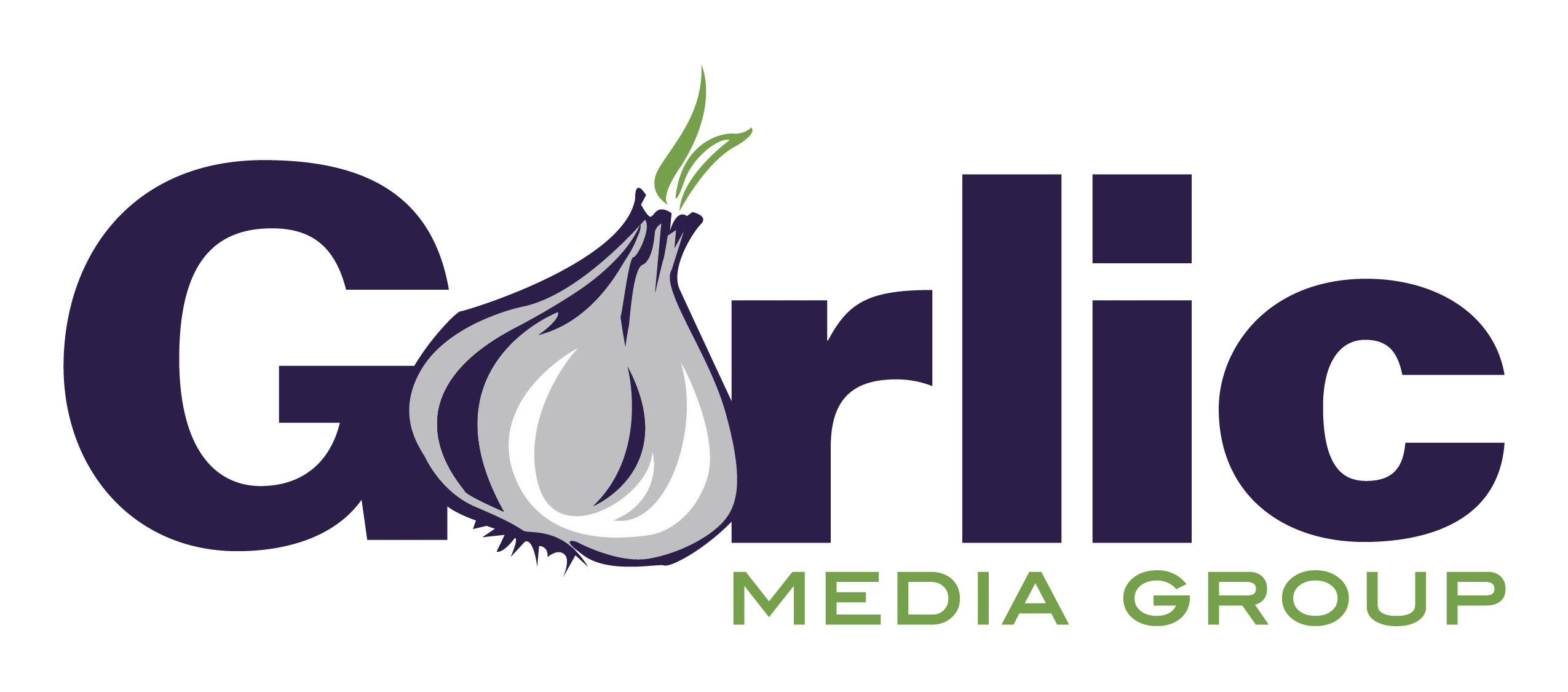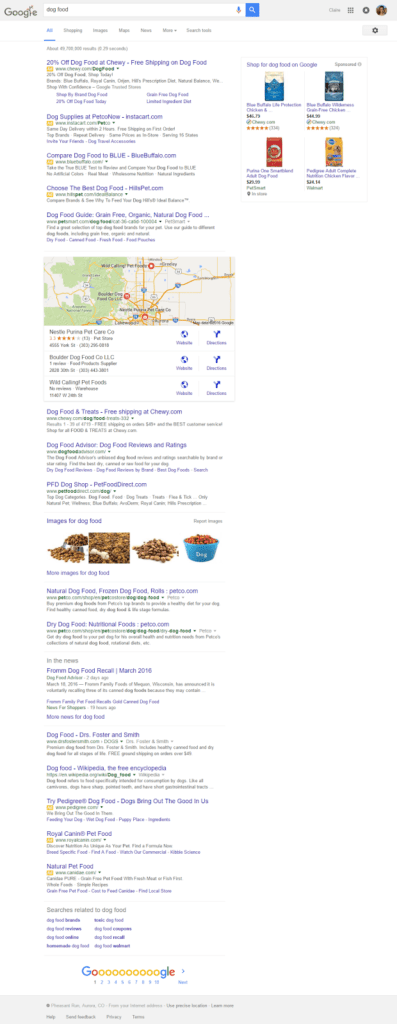You may have heard by now that Google has removed the option for ads to appear in the righthand sidebar of their search result pages.
Originally, Google Adwords had it’s own ranking system where companies bid on specific keywords in the hopes of showing up on the first page of Google. These ads were placed at the top of each search result page as the top 3 search results, with additional results spilling over into the sidebar.
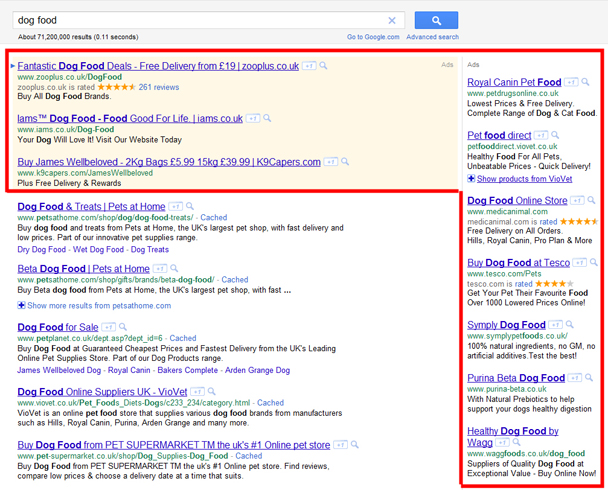
Rand Fishkin, the Founder of Moz, tweeted “Just confirmed: Saturday, Sunday, & Monday were all record days for Moz’s organic Google search visits. So far I love 4-ads-on-top world.“ These kinds of results intrigued me so I asked the question “do you think organic search is more competitive now and the focus will move towards other platforms to reach customers / audience?“
His response back to me was “I think paid search is probably more competitive now; not sure this has affected organic all that much.” While Moz has experienced record visits during the transition to the “4-ads-on-top world,” I’m seeing some interesting changes in the results that I still believe will make organic search a more competitive environment.
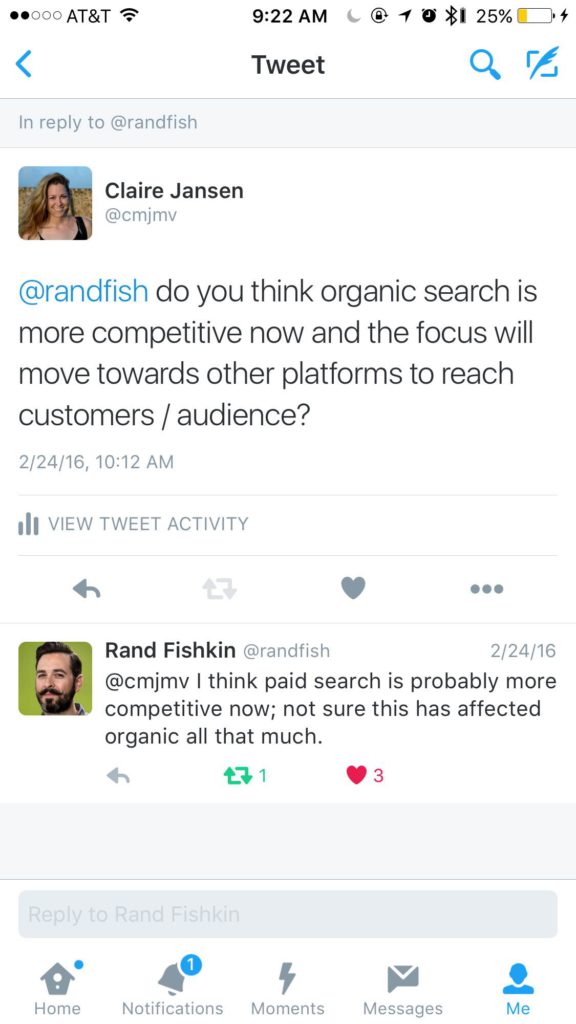
Removing ads from the sidebar is a win-win between Google and customers using their product to search online. They are simultaneously improving the experience of searching online and increasing competition (and thus revenue) for the Adwords ad placements. But what does this mean for marketers and small businesses? Well, things just got a little bit more “Lord of the Flies.”
Let’s break it down.
Improving User Experience
If you compare the same search results for “dog food” (completed now versus the image above), the above-the-fold results show four ads, four product results, three map location results, and one organic result. As a consumer, you now have options for:
- Buying the product from an online storefront
- Buying the product straight from the brand
- Buying the product from your local pet store
- Learn more about buying the right dog food from an online education guide.
Here is the above the fold search result for “dog food” now:
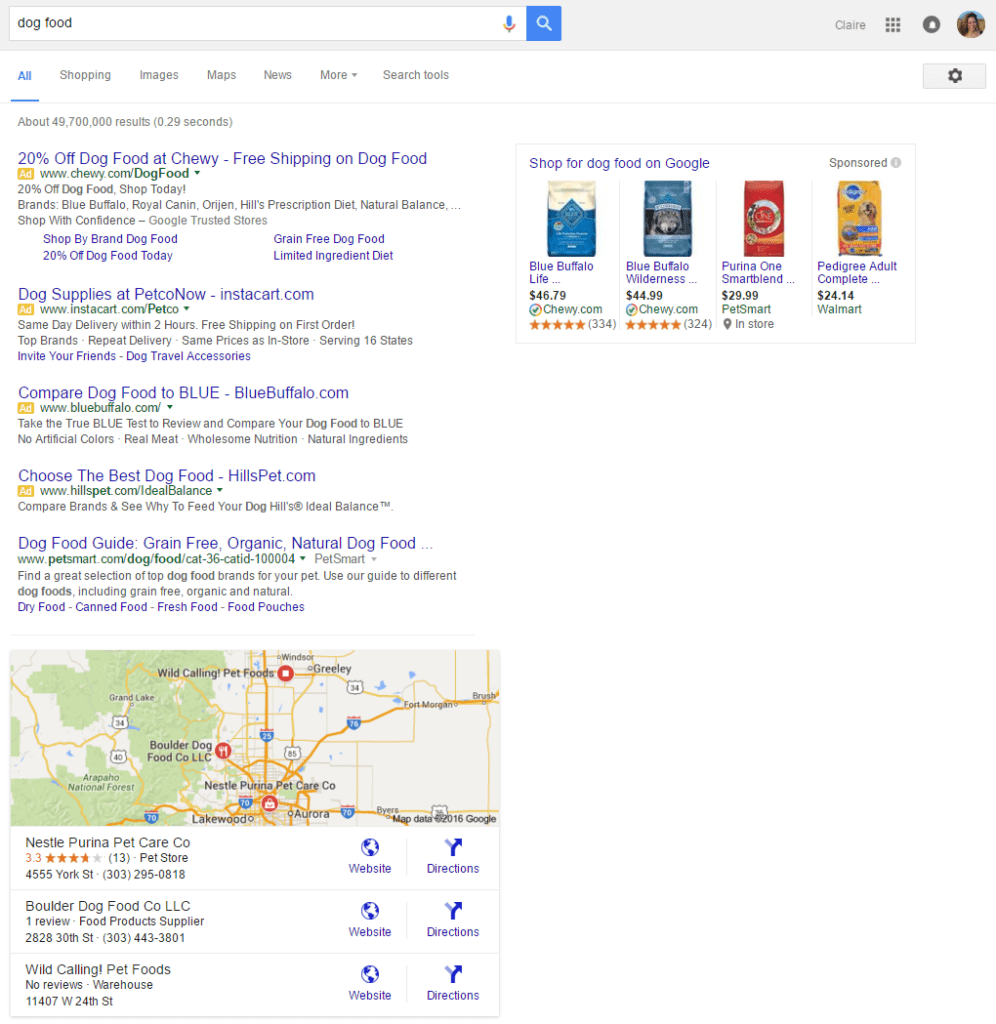
Google already knows the location in which the search was completed in, and is able to provide a more personalized experience. This one search for a very vague keyword (“dog food” as opposed to the long-tail keyword of “dog food store Denver”) has now provided the consumer with every possible answer that they could have asked for.
If they do still decide to scroll further down the search result page, they will find more blended search results including images, news stories, suggested search terms, and of course, a few more ads.
Increasing Competition
The increase in competition for Adwords is a little more obvious than the increase in competition for organic search results. There are still about seven or eight ads appearing on the first page of Google, but only 4 of those appear above-the-fold. With fewer ads being visible, the top four positions have become much more valuable, so the cost of each bid will increase. This domino effect could push out smaller businesses with limited advertising budgets who had previously been able to compete in Google Adwords. They will now be forced to focus their online marketing efforts elsewhere.
While the front page of Google for the search term “dog food” is technically showing more organic results with the inclusion of more blended results, there is less room for vague homepage links with few matching keywords. There will be more companies focusing on organic search with a greater emphasis on content and SEO, fighting for the top results across multiple blended mediums.
In 2015, less than 10% of people clicked past the first page of Google. Now, with the advanced personalization and blended search results, it isn’t exactly necessary for a visitor to ever advance past the first page. While it is true that the more vague keywords (like “dog food”) will be harder to rank for, the new personalized and blended search results also means that will be a greater number of long-tail key phrase ranking opportunities if you target the right audience and the right keywords.
Here is the entire first page of Google for the search term “dog food”:
What does this mean for Organic Search?
The best part about personalized search results is that your pet store rankings are flexible and can be manipulated by each individual search – this means you won’t definitively rank #12 for the entire city of Denver. Keyword rankings are sometimes seen as the end-all-be-all for SEO results, but a company may now rank #3 in one neighborhood and #14 in another. It is nearly impossible to know exactly what a personal search result page might look like for every potential customer, so you have to focus your efforts on the content you create and how it will target a specific audience, not a specific page on Google.
In 2014, organic listings received 90% of the clicks in search engine results. Even with the top three results being paid advertisements, the majority of people will subconsciously (or consciously) ignore these paid results and look for their answer in organic results. It is now more important than ever to understand how these results are chosen and for what audience.
We know that the first page of Google has always been competitive, so this transition could be seen as a positive for marketers who understand the importance of an integrated approach when it comes to digital marketing. It is easy to get caught up in the page rank of one specific keyword, but the reality is that this form of tracking is only one small piece to a very large puzzle.
In 2015, our team at Garlic Media Group changed the title of the service we offer from SEO (search engine optimization) to DRO (digital reach optimization) because we know that there is a whole big world out there beyond a few keywords on the first page of Google.
If you focus more on the initial research for understanding who your audience is, where they live, and how they engage online, you will be able to focus your time and energy towards the right strategy for reaching an audience that will convert into customers.
Along with knowing who and where your audience is in order to target more specific keywords, you should focus on map listings, image results, video / youtube results, product results, news articles, blogs, and organic links. All of these are all much more valuable now, and are all opportunities for reaching your target audience. The clear leaders will always rise to the top.
I look forward to further insight from Moz into their experience with the new result layout, and how it will change strategies and tactics of search engine optimization.
